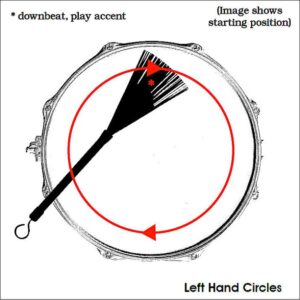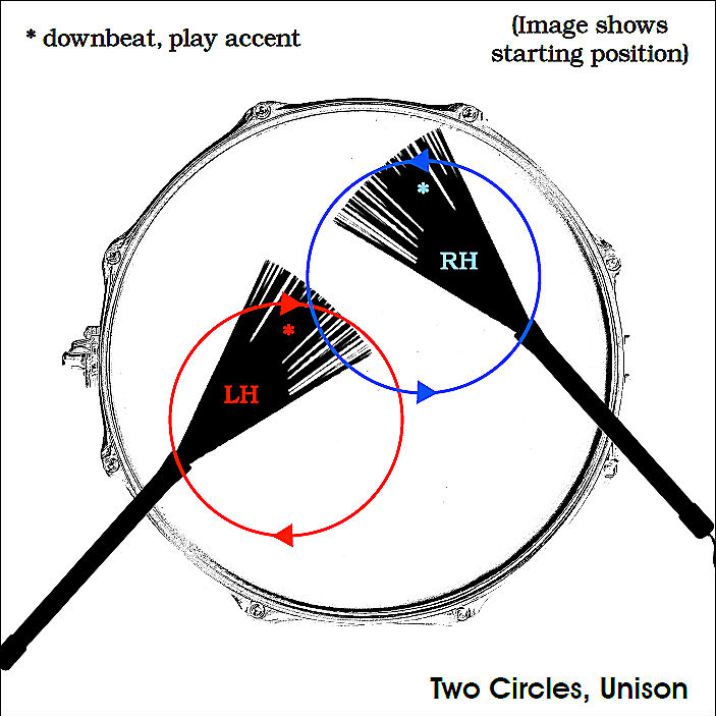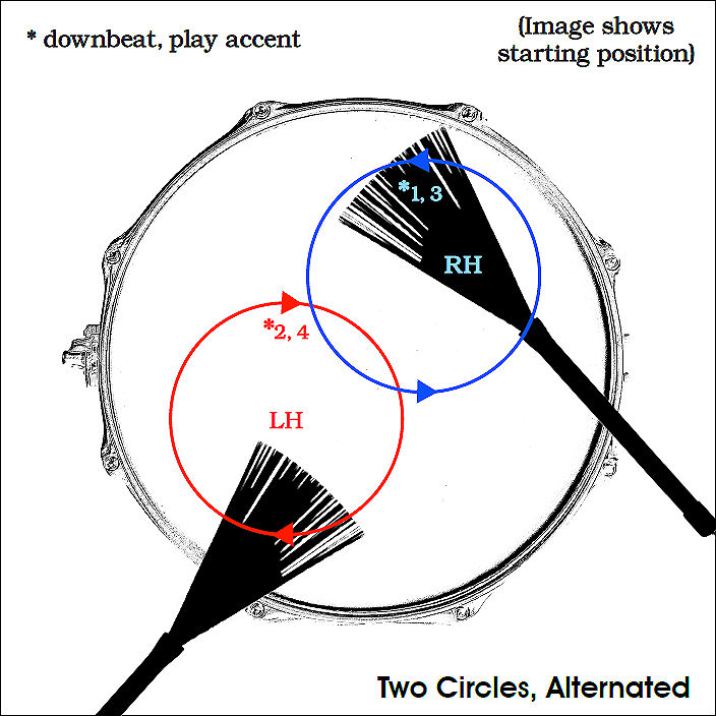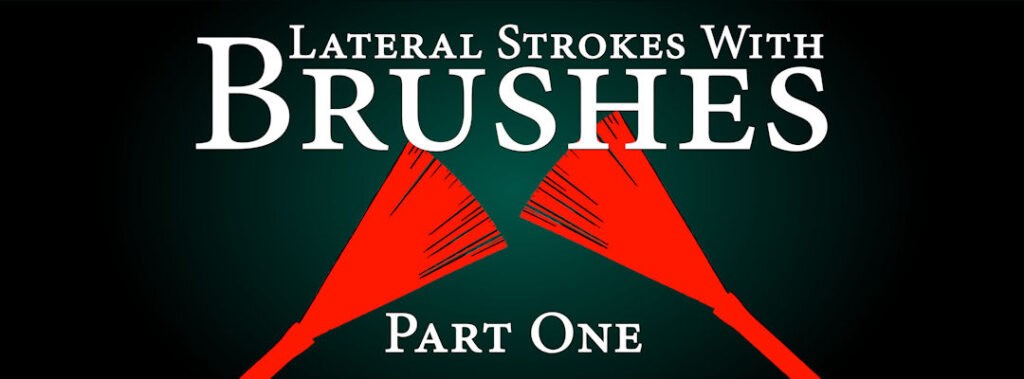(Originally posted Sept. 17, 2015 in the NYEC blog)
I love brushes.
Brushes are more than a tool with which one plays the drums; they are an instrument in their own right. Brushes are used in different music styles, but their most extended applications are found in jazz.
Most people outside the world of jazz identify brushes with ballads and mellow or folksy tunes, but those who are more familiar with them know the wide range of moods that brushes can facilitate. Brushes can produce many kinds of sound, from soft to loud, from delicate to harsh, and everything in between. It’s an extremely responsive instrument, rich of nuances.
Although brushes were allegedly first patented in 1913, brush technique was never standardized. To this day there are no official brush rudiments or notation. Over the years I studied with different instructors and none of them shared the same technique or methods.
Certain drummer’s styles involve elaborate patterns that are often written down on paper like drawings, with lines and arrows, dots, dashes, curves and whatnot. Others stay as close as possible to sticks technique to minimize technical adjustments.
Brush technique involves sweeping motions, circular motions, vertical strokes, oblique strokes… like I said, it’s an instrument!
While I believe there are no substitutes to one-on-one lessons, here I would like to share some basic concepts and exercises to get you started. Perhaps this will interest you enough to make you look for more.
While every drummer’s approach to brushes varies, we can still find common ground in the sound they produce. The two main categories at the base of brush playing are long and short sounds.
As opposed to sticks, where the duration of the sound of a stroke is the sum of the velocity of the stick’s rebound plus the decay/resonance of whatever surface it is hitting, short sounds on brushes are a different matter. A traditional brush is constituted of multiple metal wires, all these wires will never hit a surface at the same time, which causes a brush stroke to have its typical fuzziness. There are multiple ways to compensate for this fuzziness, or to enhance it, depending on the musical context, but I will not address this subject here; it is too vast and would deserve a separate article.
Instead, I will share some introductory exercises aimed at developing a good legato sound, which belongs to the long category.
When you practice these exercises you will notice that producing an even, consistent sound is a challenge. It is important to keep in mind that sound quality is of paramount importance, and I recommend to persevere until you can comfortably execute these exercises free of any unwanted accents. A good legato sound is even in volume and constant in its timbre and quality. You can add “personality” to it once you achieve full control.
Furthermore, you will notice that both the angle at which you hold the brush and the pressure you apply to the drumhead greatly affect the sound you produce. Experiment with different approaches and remember that your posture should feel relaxed.
It should be noted that brushes should be played on coated drum heads. When a drum head has been used for a long time it loses its finish – it becomes smoother and provides less friction against the wires the brushes are made of, resulting in lower volume and responsiveness.
Exercise Number 1
Left Hand circles (see fig.1). Set the metronome at a slow tempo (35 bpm is a good start) and play circles moving clockwise around the surface of the snare drum, staying always close to the edge. A full circle equals one quarter note. Start at 12 o’clock and play an accent every time you complete a circle (your brushes will meet the click of the metronome every time at 12 o’clock). To articulate an accent, apply extra pressure towards the head, which results in a slightly louder sound.
Exercise Number 2
Right Hand circles (see fig.2). Same as exercise 1, this time the right hand is playing the exercise, in a counter-clockwise direction.
Exercise number 3
Two circles, unison (see fig.3). Same metronome settings and circles directions as in exercises 1 and 2. In this case two circles are played simultaneously. Each brush is now occupying half the surface of the snare drum head; accents are still played on all downbeats. Note that while the figure shows two intersecting circles, the brushes never meet in that area.
Exercise number 4
Two circles, alternated (see fig.4). Same metronome settings and circles directions as in exercises 1 and 2. The two circles are now out of phase by 180 degrees. In other words, the right hand is playing accents on beats 1 and 3 (in a 4/4 measure) and the left hand is playing accents on beats 2 and 4. The right hand starts at 12 o’clock of its circle while the left hand starts at 6 o’clock. When the left hand reaches 12 o’clock, that would be beat 2. In this exercise each circle is 2 quarter notes long. Watch out, it’s slow!
Once you are comfortable playing steady and accurate quarter notes on all these exercises you can start moving up to other rhythmic figures like quarter note triplets, eighth notes, eighth note triplets, sixteenth notes, etc., always keeping the metronome in quarters. This way you will build speed while focusing on sound.
Your next step would be to use your imagination, creating rhythms by combining these exercises and mixing note values.
[Edit: If you are interested in more about brushes, check out this post about long and short strokes]
Here is an inspiring video:









